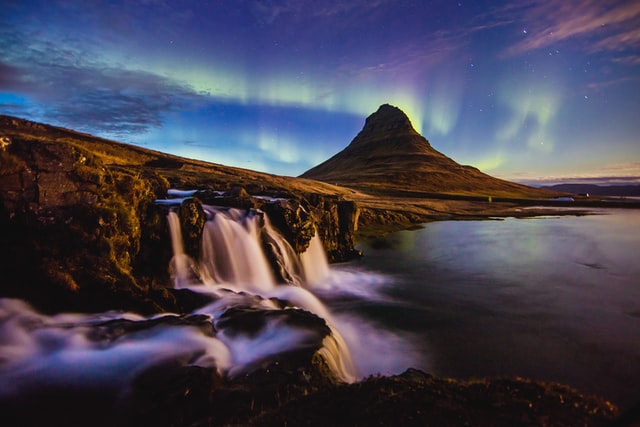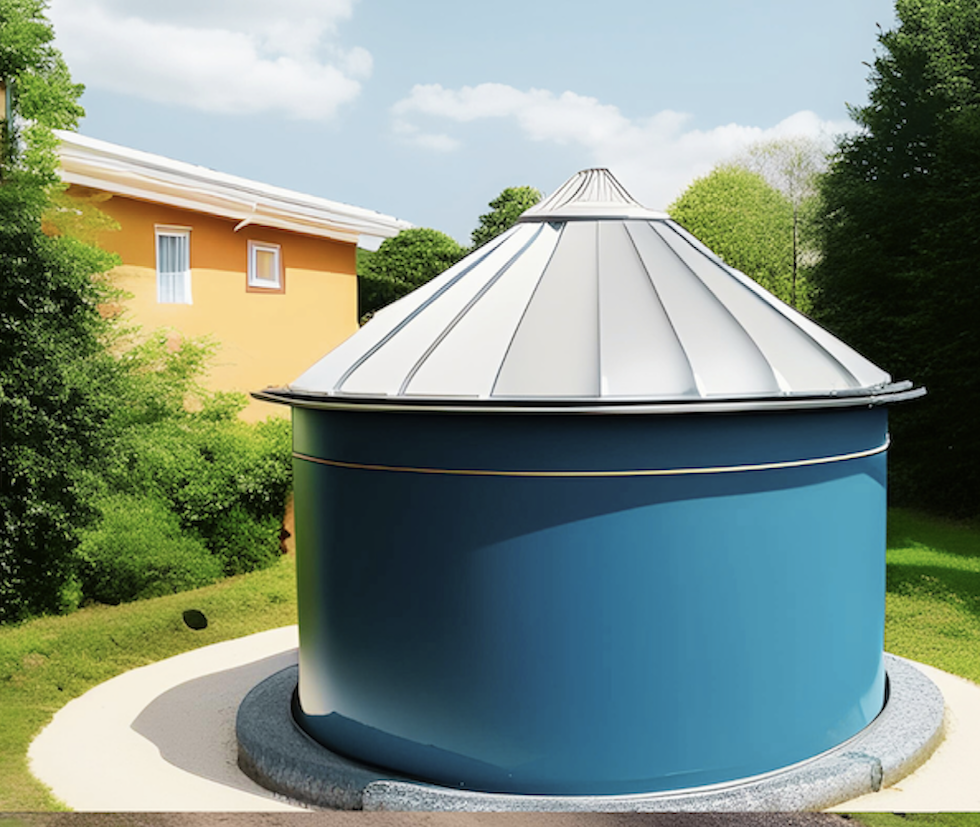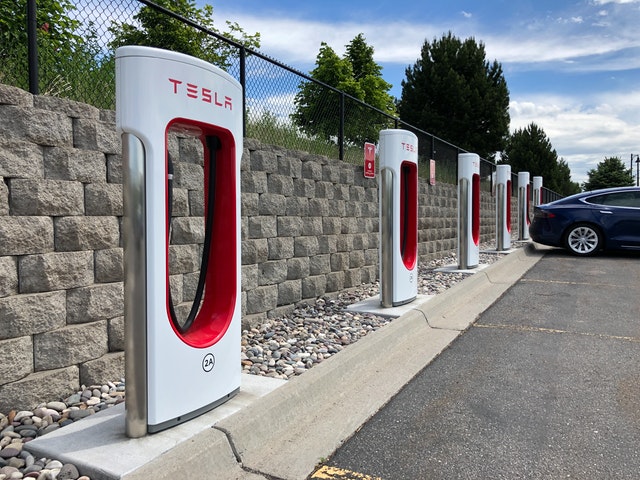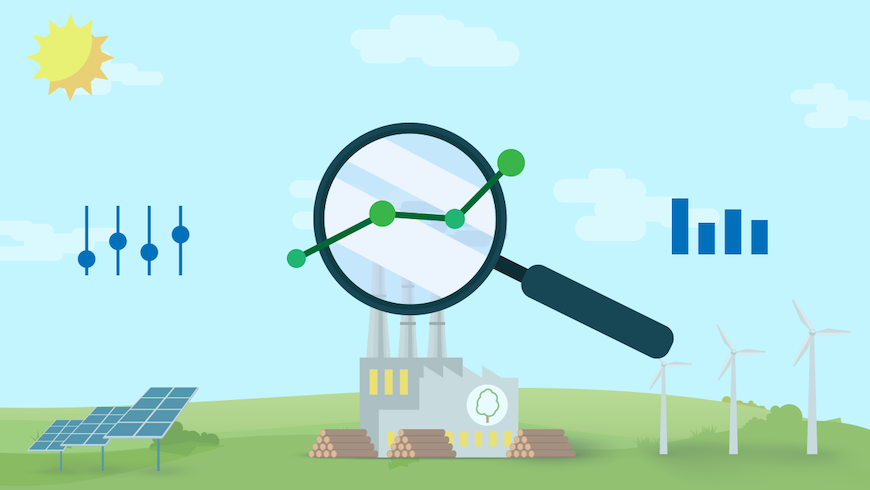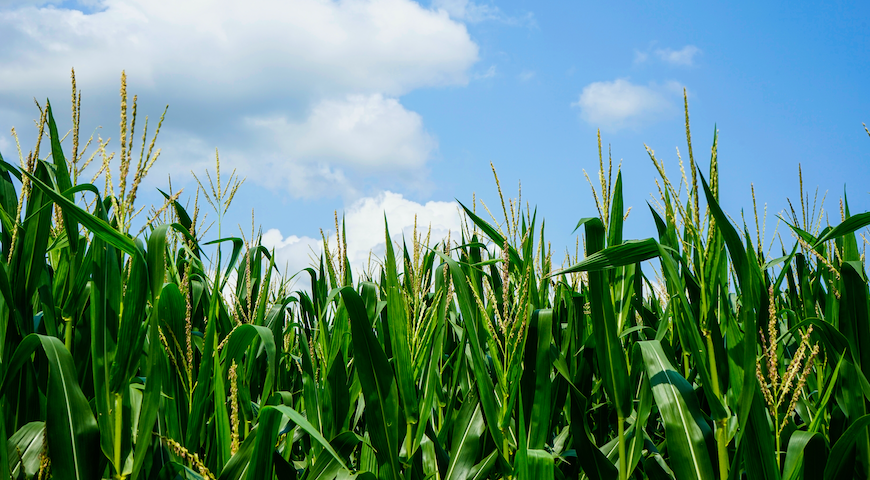Currently, Iceland continues to be in the forefront position in the use of renewable energy. All essential conditions are in favor of Iceland to set a leading example regarding energy transition. Furthermore, the country has already extensive positive experience in such transformations.
Switching from oil to geothermal heating is a perfect example of a highly successful national energy transition. Therefore, with this, the country also avails great positive economical and environmental benefits. Many Iceland Renewable Energy Companies also had has have given their contribution thereby resulting in rising Iceland renewable energy percentage.
Almost 90% of Icelandic households are heated with Geothermal water. No wonder why the country is called the Pioneer when it comes down to Geothermal energy. In the 20th century, the country harnessed its natural resources and transformed its population from a poor, coal-reliant society to one currently upheaved very high living standards.
Image from Our World in Data
Almost 85 Percent of the country’s primary energy needs are met with indigenous renewable sources. Currently, nearly 100 percent of Iceland’s electricity is produced from renewable sources. However, rapid expansion in the country's energy-intensive industry has resulted in a considerable increment in demand for electricity during the last decade.
Nonetheless, Iceland is not only an important partner to UNEP (United Nations Environment Programme) because of its technical as well as financial support provided to energy projects but it is also one of the Member States. The country has consistently paid its “fair share” to the Environment Fund of UNEP. Therefore, Iceland supports all of UNEP’s work.
Source | Government Of Iceland
What are the major renewable sources in Iceland?
The major sources of renewable sources in Iceland are Hydropower, Geothermal power as well as Wind Power. All these enriched resources are the reason behind the impressive Iceland renewable energy percentage.
Iceland has one of the most unique geologies. This is exactly the reason why they are eligible to produce renewable energy relatively cheaply. It is located in the Mid-Atlantic Ridge making it one of the most tectonically active places in the world. The country is blessed with 200 volcanoes and over 600 hot springs. This allows them to harness enough geothermal energy.
In 2016, Geothermal energy provided about 65 percent of primary energy. Whereas, Hydropower produced 20 percent. The rest of the share belongs to fossil fuels that are used for transport means only. Similarly, in 2015, Iceland’s electricity consumption was 18,798 GWh whose 100 percent production was made by using renewable sources. 73 percent came from hydropower while 27 percent came from geothermal power.
Image from reneweconomy.co.au
Nevertheless, Glaciers cover 11 percent of Iceland. Therefore, season melt feeds glaciers’ rivers thereby contributing to hydropower resources. Nonetheless, the country has lunatic wind power potential that stayed untapped for ages. However, in 2013, Iceland became a producer of wind energy that contributed to Iceland renewable energy percentage.
Not to forget to mention, most of the hydropower plants are owned by Landsvirkjun. It is Iceland’s National Power company as well as the main supplier of electricity. Furthermore, many Iceland renewable energy companies are working to utilize these resources. All this will upheave Iceland renewable energy percentage even more.
However, a license issued by the National Energy Authority is required to construct as well as operate an electric power plant. Also, the National Energy Authority is responsible for monitoring and regulating the compliance of companies operating under issued licenses.
Source | Nea.is
When did Iceland switch to Renewable Energy?
Before, the country only utilized geothermal resources for washing and bathing whilst hydropower production started out in the 20th century. Only, few MegaWatts (MW) were produced during those days. Similarly, in the early 1970s, Iceland faced the largest share of the country’s energy consumption that was derived from imported fossil fuels.
It wasn’t long that Iceland could not sustain oil price fluctuations occurring because of a number of crises affecting world energy markets. The country required a stable and economically feasible domestic energy resource. Well, local entrepreneurs took the first step to this renewable development challenge for both geothermal and hydropower.
Image from Pexels by David Elvar Masson
But in the early 20th century, a farmer found a way to use the hot water coming out from the ground. The farmer developed a primitive geothermal heating system for his farm. Municipalities followed his footsteps and built a more systematic exploration of the geothermal resources. They borrowed drilling technology from the oil industry that made drilling cheaper as well as could heat more homes.
They began to develop larger projects with the inclusion of geothermal district heating systems on a commercial scale. Similarly, early hydro powers were also developed by diligent farmers to provide electricity for their farmhouse. Cooperative efforts were also put in this if many farmers needed to provide for a few farms. During 1950, 530 such small hydropower plants were built in the country. This led to scattered independent power systems around Iceland.
Furthermore, the Government of Iceland established a geothermal drilling mitigation fund in the late 1960s. This fund loaned money was for geothermal research as well as for test drilling process and cost recovery for failed projects. Therefore, this newly established legal framework made it attractive for households to connect to the newly geothermal district-heating network instead of continuing to use fossil fuels.
Thereby, Iceland forced on large-scale hydropower development that resulted in attracting large international energy users. Lure new industries to their country, create jobs as well as establishing a nationwide power grid was the goal for the country. Iceland achieved its set goal with unwavering effort and became the Iceland we know as of today.
Source | UN Chronicle
List Of Renewables Energy Companies in Iceland
1. Landsvirkjun
Landsvirkjun was established on July 1, 1965. The effort was put by the Government of Iceland to optimize the country’s natural energy resources as well as to encourage foreign investors within the power-intensive industries to invest in the country. Therefore, Landsvirkjun is the National Power of Iceland.
The company ‘Landsvirkjun’ was established in order to construct as well as operate hydroelectric power plants that could provide reasonably electricity to the domestic market and power-intensive industries.
Since then the company has completed various large-scale projects across Iceland. Currently, the company operates 17 power plants inside the country. Furthermore, Landsvirkjun aims to reach carbon neutrality in 2025. Currently, the company owns and operates 15 hydroelectric, 3 geothermal wells as 2 wind power stations in Iceland. All this generates 2,150 MegaWatt (MW) of energy which is approximately 14 TeraWatt (TWh) energy generation annually.
Landsvirkjun has 50 years of experience in Hydropower, 30 years of experience in geothermal, and has completed over 30 international projects. Landsvirkjun aspires to become a leader in the sustainable use of renewable energy sources. It is also the largest electricity generator in Iceland thereby contributing to the rise of Iceland's renewable energy percentage.
- Founded: 1965
- Headquarter: Reykjavik, Iceland
- Number of Employees: Around 275
- Projects: Power Projects, Energy Research Fund, Submarine Cable to Europe, IDDP, WIn Power
- Sector: Biofuel, Biogas, Bioenergy
- Specialties: Optimizing natural energy resources of Iceland, Construct and operate hydroelectric power plants
- Significant Feats: Built first substantial hydropower station at Burrell, Steam Energy power stations at Bjarnarflag and uncountably more
- Website: Landsvirkjun.com
2. Carbon Recycling International
Carbon Recycling International or CRI to say in short was founded in 2006 in Iceland. The company’s motive since its establishment was to recycle carbon dioxide emissions by utilizing it to make useful products.
Furthermore, CRI is crowned as the world leader in power to methanol technology. They produce renewable methanol from carbon dioxide, hydrogen as well as electricity for fuel applications, greener chemicals, and products. Moreover, they work to increase resource efficiency as well as to create valuable products from waste gases and renewable energy.
The company designs engineers as well as implements methanol production plants based on our Emission-to-Liquids technology (ETL). Furthermore, ETL processes technology for producing methanol from carbon dioxide emissions. They are guided by values of leadership, sustainability, cooperation, innovation as well as development to facilitate the transition to a more circular economy through their innovative approach to carbon capture as well as utilization across the world.
CRI’s ETL technology can further absorb surplus power generated by solar and wind means at peak times as well as in remote locations. Moreover, CRI’s Renewable Methanol is a sustainable liquid fuel that resembles an energy-dense as well as is a cost-effective alternative energy carrier. It blazes cleanly and also can be produced from a variety of different energy sources as well as raw materials.
- Founded: 2006
- Headquarter: Reykjavik, Iceland
- Number of Employees: Around 30
- Projects: Circleenergy, Fresme, gamer, George Olah Plant, MEFCO2, Shunli plant, and many more
- Sector: Biofuel, Biogas, Bioenergy
- Specialties: Renewable methanol, Biodiesel Production, Chemicals, gasoline blending as well as waste water treatment
- Significant Feats: Energy Storage, energy Transition as well as ETL technology that enables large scale utilization of carbon dioxide as well as hydrogen water streams
- Website: carbonrecycling.is
3. Islensk Nyorka Energy
Islensk Nyorka Energy was formed in 1999 following a declaration from the Government of Iceland in 1998. The declaration was all about exploring the possibility of exchanging from a fossil fuel paradigm in a transport to utilizing hydrogen.
Simply, the goal of Islensk Nyorka Energy is to research as well as demonstration projects regarding hydrogen. Afterward, in 2001 they launched the ECTOS project that was all about R&D project testing 3 fuel cell Citaro buses as well as a commercial hydrogen refueling station.
The company still today offers a knowledge base and consultancy regarding hydrogen. They have operated hydrogen service systems including FC buses from 20101 to 2007. Furthermore, the company gives advice as well as consultation for those who wish to launch their own hydrogen systems.
Similarly, for past years, the company has been researching other parts of electric transport. They have been testing Battery Electric Cars (BEVs) since 2010. Furthermore, they are involved with other Scandinavian partners in testing battery-powered boats. Moreover, they have created networks for those who are working regarding the electric transport sector.
Not to forget to mention, the company’s project has been presented in many international conferences and participation in European research as well as development projects. Islensk Nyorka Energy is the only company in the world to have operated a hydrogen refueling station, hydrogen ICE vehicles, FCEV as well as BEV’s. No wonder why Islensk Nyorka Energy is one of the tops when it comes to Iceland renewable energy companies.
- Founded: 1999
- Headquarter: Reykjavik, Iceland
- No of Employees: Up to 300
- Projects: Nordic marina, Don Quichote, Hydrogen Mobility Europe, Scandinavia hydrogen, Smart-H2, and many more
- Sector: Biofuel, Biogas, Bioenergy
- Specialties: Hydrogen Service Systems, Battery Electric Cars, Battery Powered Boats, Electric Transport Sector, Hydrogen ICE Vehicles, FVEV, BEV’s
- Significant Feats: Commercial Hydrogen Refuelling Station, Hydrogen fuel cell auxiliary engine, Presentations done all over the world
- Website: Islensk Nyorka Energy
4. Landsvirkjun Power
Landsvirkjun Power is a subsidiary of Landsvirkjun, National Power Company Of Iceland. The subsidiary was established in 2007 to manage international operations. Landsvirkjun Power’s purpose is to participate in the advisory as well as co-development of renewable projects including possible co-investment.
First and foremost, their primary focus is on hydropower as well as geothermal projects. Their interest in win power is growing as well. The company’s vision is to manage climate change through renewable energy sources. Furthermore, Landsvirkjun Power provides comprehensive expertise in the development, construction as well as operations of renewable power schemes. All this is with the main emphasis on hydropower as well as geothermal power plants.
Landsvirkjun Power operates about 2150 MegaWatt (MW) of hydropower as well as geothermal power plants and a pilot wind project. Moreover, the subsidiary company has also left a strong mark on 15 countries by completing various projects. The company has the skills and experience to turn an idea into a fully operable project. This goes from study to supervising the construction as well as commissioning.
Currently, Landsvirkjun Power provides services such as Hydropower, Geothermal, Power Transmission Systems, Operating, and Maintenance. It is the subsidiary of the company that tops our Iceland renewable energy companies list, so yeah it’s big.
- Founded: 2007
- Headquarter: Reykjavik, Iceland
- Number of Employees: Around 201-500 employees
- Projects: More than 30 international projects completed
- Sector: Hydropower, Geothermal Energy
- Specialties: Hydropower, Geothermal, Power Transmission Systems, Operating and Maintenance
- Significant Feats: Left presence in 15 countries by completing projects
- Website: LvPower.Com
5. On Power
On Power is one of the subsidiaries of Reykjavik Energy. Therefore, the foundation of the company is a pretty solid one. The company’s main objective is to protect the interests of the country’s natural resources. Furthermore, they guide their customers toward the principle of sustainability.
Furthermore, On Power supports innovation as well the responsible utilization of natural resources and promotes energy switching to a lower ecological footprint. Therefore, benefiting society as a whole. Moreover, the company produces as well as sells electricity to the entire population and hot water to the capital area.
On Power owns two geothermal steam plants in Nesjavellir and Hellisheidi which were both established to meet the increasing need for hot water. Nevertheless, the company also happens to be the owner of Andakilsa Hydropower station located in Borgarfjordur. Moreover, the company puts a great deal of effort into broadening their own EV rapid-charging points network throughout Iceland.
- Founded: 2014
- Headquarter: Reykjavik, Iceland
- Number of Employees: Around 60
- Projects: Various projects regarding geothermal energy and EV fast-charging stations completed in Iceland
- Sector: Geothermal Energy
- Specialties: Electricity, EV fast-chargers
- Significant Feats: 2 Geothermal Steam plants in Hellisheidi and Nesjavellir as well as 1 hydropower station in Andaki, Borgarfjorour,
- Website: On.is
6. Reykjavik Geothermal
Reykjavik Geothermal is a dedicated geothermal development company that focuses on the development of high enthalpy resources for utility-scale power production. The company was established in 2008 by a proven team of experienced geothermal experts.
Currently, the company is responsible for projects in over 30 countries. The company also built the world’s largest geothermal power plant in Iceland. Similarly, Reykjavik Geothermal specifically identifies as well as targets locations where quality geothermal resources can be efficiently harnessed. The great effort is all to fulfill the demand of local people for power as well as clean dependable energy
Furthermore, Reykjavik Geothermal technical capability has been matched by an in-house team of experts and experienced professionals in related fields. Therefore, these capabilities make RG the preferred entity for the development of geothermal resources anywhere around the world.
Nevertheless, the company has been involved with the development of over 3000 MegaWatt of geothermal projects. Reykjavik Geothermal values and is committed to responsibility, integrity as well as quality, contributing to every project the best possible practices for sustainable development.
- Founded: 2008
- Headquarter: Reykjavik, Iceland
- Number of Employees: 18 employees
- Projects: Various project completed in over 30 countries internationally
- Sector: Geothermal energy
- Specialties: Geothermal plants development
- Significant Feats: Projects in over 30 countries
- Website: rg.is
7. ISOR Iceland GeoSurvey
ISOR GeoSurvey was founded in 2003 as a self-financing state-owned, non-profit organization. Therefore, the company receives no funding from the government but operates on a project as well as on a contract basis like a private company or so.
The company has provided consulting, training as well as scientific services to the Icelandic power industry as well as to the Government of Iceland. The same goes for various foreign companies and governments around the globe. ISO GeoSurvey's main focus is on geothermal exploration, development, as well as its proper utilization. However, the company's experience also covers many other geoscience-related fields including groundwater studies, marine geology as well as environmental monitoring.
ISO GeoSurvey also offers engineering as well as economical services related to steam gathering systems and power plants. Furthermore, teams of scientists as well as technicians work on geothermal projects all over the world.
First and foremost, the company is committed to being at the forefront of geoscientific research, development as well as service. Moreover, they find ways to enhance as well as augment geothermal resources. Similarly, they train scientists throughout the world in geothermal science and development as well as participate in international geothermal development projects.
- Founded: 2003
- Headquarter: Reykjavik, Iceland
- Number of Employees: More than 90
- Projects: Many Geothermal Projects completed successfully
- Sector: Geothermal energy
- Specialties: Geothermal exploration, Geothermal training, geothermal logging and more
- Significant Feats: Trained scientists throughout the world in geothermal science and development, Participated in international geothermal development projects
- Website: ISOR.is
8. Orkustofnun
Orkustofnun is a government agency under Iceland's Ministry of Industries and Innovation. The company’s main responsibility is to advise the Government of Iceland regarding energy issues as well as related topics.
Furthermore, licensing as well as monitoring the development as well as the exploitation of energy and mineral resources, regulating the operation of the electrical transmission as well as distributing systems and promoting energy research are Orkustofnun’s few more responsibilities.
Not to forget to mention, the research facilities, as well as the multidisciplinary research environment of Orkustofnun, have given the institution status for over three decades as one of the leading geothermal energy research institutions in the world.
The company has been instrumental in the execution of government policy regarding exploration as well as the development of geothermal resources. Similarly, they also advise communities, companies, individuals, as well as a foreign government about their utilization of these resources.
- Founded: 2003
- Headquarter: Reykjavik, Iceland
- Number of Employees: Around 40 employees
- Projects: Various research projects completed throughout Iceland and Internationally
- Sector: Renewable energy
- Specialties: Research, Exploitation of Energy and Mineral resources, Electrical Transmission, Distributing systems, as well as Promoting Energy research
- Significant Feats: Advisees Government of Iceland regarding energy issues and related topic
- Website: NEA.is
9. Mannvit
Mannvit is a company that has been formed after merging three engineering firms. VGK and Honnun are two firms that were established in 1963 whereas Rafhonum is the third firm that merged thereby establishing Mannvit.
The company provides services in the fields of engineering, geoscience, environmental studies, IT as well as construction material research. Similarly, they offer complete project management as well as EPCM services. Mannvit services can be divided into three core fields: Renewable energy and transmission; industry as well as oil and gas and infrastructure.
However, Mannvit promises to be dedicated to renewable energy as well as has extensive experience in biofuels, especially biomethane, biodiesel as well as bioethanol. The company’s specialties offer experienced biofuel process engineering, consulting as well as design services and works with clients to develop process design for the generation of biofuels.
Furthermore, the company seeks to evaluate projects with regard to sustainability as well as risk and in that way deliver social, environmental, and economic benefits to its customers. Moreover, Mannvit awards its customers regarding environmental and social impacts and where possible offers solutions that increase the sustainability of their projects. Therefore, it contributes to Iceland's renewable energy percentage as well as is one of the top Iceland renewable energy companies.
- Founded: 1963
- Headquarter: Kópavogi, Iceland
- Number of Employees: Around 123 employees
- Projects: More than 80 Projects completed
- Sector: Biogas, Biofuel, Bioenergy
- Specialties: Landfill gas and biomethane, Biodiesel, Bioethanol, Methanol
- Significant Feats: 14 offices in 5 countries
- Website: Mannvit.com
10. Laki Power
Founded in 2015, Laki Power works to transform the way line monitoring is carried out for transmission system operators as well as distribution system operators by bringing new technology to market that drastically enhances the level of power that can be efficiently harvested from high voltage lines.
The company’s patented technology can harvest up to one hundred times more power than its competitor's solutions. Furthermore, it offers unprecedented monitoring capacity as well as flexibility for a range of sensors as well as applications. Currently, Laki POwer offers Real-time intelligence, asset protection, Dynamic Line rating, decreases Fire risk, Line icing, Video surveillance as well as last but not least renewables integration.
Laki POwer’s advanced analytics as well as hardware provide an innovative solution for various of the most pressing issues faced by transmission system operators today. Similarly, the company has developed various customizable monitoring stations such as a High voltage multi-purpose surveillance and DLR station, High voltage environmental monitoring station, a High voltage visual inspection and surveillance station, high voltage fire and thermal event detection station.
- Founded: 2015
- Headquarter: Reykjavik, Iceland
- Number of Employees: 1-10 employees
- Projects: Various project completed to date
- Sector: Renewable energy
- Specialties: Transmission system operation, Distribution system operation, Electrical transmission
- Significant Feats: Built stations like High voltage multi-purpose surveillance and DLR station, High voltage environmental monitoring station, High voltage visual inspection and surveillance station, high voltage fire and thermal event detection station
- Website: Lakipower.com
Iceland Renewable energy Percentage
Nonetheless, Iceland is crowned as the world’s largest green energy producer per capita as well as the largest electricity per capita. It’s approximately 55,000 kWh per person per year. If compared, the EU average is less than 6000 kWh. However, almost all of this produced electricity is used in energy-intensive industrial sectors.
Almost all produced electricity in Iceland is generated using renewable energy sources. 73 percent of electricity comes from hydropower plants whereas 27 percent comes from geothermal. All this accounts for almost 100 percent of total energy consumption in the country. This is the highest share of renewable energy in any national total energy budget so far. Also in 2013, the country became a producer of wind energy. Furthermore, 90 percent of households are heated with Geothermal water in Iceland.
Image from Icelandmag.is
As per Geopolitical Gains and Losses after Energy Transition (GeGaLo Index), the country is ranked No. 1 among 156 countries. Furthermore, Iceland will be the greatest winner after the completion of a full-scale transition to renewable energy.
Furthermore, in 2002 it was estimated that Iceland only generated 17 percent of the total harnessable hydroelectricity energy. The country’s government believes another 30 TerraWatt (TWh) of hydropower could be produced each year. This is possible if all the untapped sources are used that are not being so for environmental reasons.
To further raise Iceland renewable energy percentage, several Icelandic institutions offer education in renewable energy. The education goes from university level as well as research programs for its advancement. Furthermore, both public, as well as private Iceland renewable energy companies, are working and conducting extensive research regarding renewable energy. The National Energy Authority of Iceland, Landsvirkjun, and Icelandic Energy Portal are such examples of it.
Source | Visit Iceland
Is Heating free in Iceland?
Bluntly to say, heating is not free in Iceland but rather is very cheap. However, the price varies regarding districts. Geothermal energy provides Icelandic households the cheapest house heating rates when compared to all nordic countries. Finland, Sweden, Denmark as well as Norway are the Nordic countries.
The country is blessed with Geothermal energy thereby boasts benefits to its people. People can do it in the quality of living, swimming outside year-round, low electricity costs as well as growing vegetables year-round near the Arctic Circle.
Image From Think GeoEnergy
Recently, Samorka, the Federation of Energy and Utility Companies in Iceland conducted a study where they analysed the overall cost of household heating in capital cities of nordic countries. As per the study result, it costs five times cheaper per year to heat households in Reykjavik, the capital city of Iceland than in Helsinki, the capital city of Finland.
The cost of heating for a 100 square meter apartment (almost 1,080 square feet) in Reykjavik, Iceland is 648 euros. That is approximately 724 USD. Whereas it costs five times more expensive in Helsinki, Finland. The cost is 3,243 Euro or approximately 3,623 USD per annum. In second place comes Stockholm, Sweden followed up by Copenhagen, Denmark, and Oslo, Denmark.
Source | Think Geology
Conclusion
The use of more efficient ships, the quota system as well as electrification of fish meal production has contributed largely to the country. Therefore, Iceland also made significant progress with 43 percent less pollution in 2014 when compared to 1990.
Image from Unsplash by Michael Held
Nevertheless, Iceland has mostly focused on sharing its knowledge through technical expertise in the development of geothermal. Iceland’s expertise in the involvement of geothermal technical assistance as well as in renewable energy education would be of good use to other countries around the globe. Since 1979, almost more than 1,000 experts from around the world have undertaken geothermal courses in the country.
Iceland’s story is an inspiration to all the countries that think that only rich countries have the opportunity in their grasp to overcome cost as well as internal barriers and obstacles for a green and clean energy transition. Or else, Perhaps it is easier to implement new power solutions where power systems have not yet been fully implemented yet.
Iceland’s transition from expensive fossil energy to cheap green energy is a success story rather than a “One Model for all” approach. Furthermore, the country has become an inspiration to those countries who want to shift towards renewable energy. Therefore, the constantly rising Iceland renewable energy percentage is an important lesson to share for any country seeking such transformation in the renewable energy future.

 How it Works
How it Works Pricing
Pricing FAQ
FAQ Quiz
Quiz Contact Us
Contact Us
